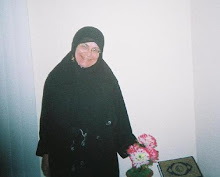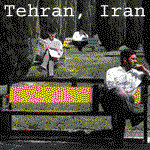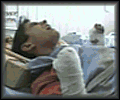In New Orleans, Sound of Normalcy Returning Slowly
 Final stretch of streetcar line set to reopen.
Final stretch of streetcar line set to reopen.NEW ORLEANS - For the first time since Hurricane Katrina, the 1920s-era St. Charles Avenue streetcar will clack today along its entire 13-mile route.
Its clanging bell will signal that some aspects of life are returning to normal nearly three years after Katrina flooded 80 percent of the city. But the line's resurgence masks the reality that other mass transit continues to struggle.
Once the final mile or so reopens, tourists, downtown workers and college students will be able to ride the popular, un-air-conditioned St. Charles line from the downtown business district through mansion-lined streets and other areas nearly 24 hours a day.
In harder-hit and slowly recovering neighborhoods, however, the wait for a bus can be an hour or more. Only a quarter of the people who took streetcars and buses on workdays before Katrina are doing so now.
Civic groups want more streetcar and bus lines to link neighborhoods as the city rebuilds, saying public transportation will help attract new residents to a city where insurance and gasoline prices are pushing up the already-high cost of living.
Thelma Tyler, who is trying to rebuild her Lower Ninth Ward home, hopes that with the streetcar back, transit officials can focus on improving service in her neighborhood.
"Hopefully, things will be expedited as soon as possible, because we don't want the elderly waiting that long or walking, especially in the heat," she said.
After Katrina damaged the Regional Transit Authority's fleet, the agency curtailed bus service to many neighborhoods where fewer people were living.
The authority says it now provides service throughout the city but at nowhere near previous levels. Many of RTA's traditional riders - lower-income people with no choice but to take a bus to work - have not returned. Some blue-collar neighborhoods haven't recovered even half of their populations.
Popular routes, like the St. Claude line linking downtown to the Lower Ninth Ward, have buses scheduled to run about every 15 minutes. But "you can't put one out every 15 minutes when there are two people on the bus," said authority spokeswoman Rosalind Cook.
Tanya Harris, of the community organization ACORN, understands. According to one estimate, just 10 percent of the neighborhood's population has returned, and derelict houses and vast green swaths of land still dot the area.
"But the problem is, if people don't feel there's adequate transportation into and out of a neighborhood, they're not coming back," she said. "I can't make it clear enough: People follow infrastructure; infrastructure should not follow people."
RTA is working to overhaul its transit plan. A new fleet of buses that will run on cleaner biodiesel is set to go into service this year. The authority plans to study the feasibility of a new streetcar loop that would hook into the riverfront line serving the French Quarter, but building a line would be expensive.
Today, meanwhile, the St. Charles streetcar will make its first full run, providing a morale boost for the city. Streetcars had been doing test runs along the final stretch, Carrollton Avenue, for months.
The St. Charles line carries an average 6,000 to 8,000 people each workday. Its reopening in segments, beginning in December 2006, has been greeted with much fanfare - music, speeches and cheering well-wishers along the route. The complete opening - officially set for Saturday, to coincide with a neighborhood festival - is expected to be no different.
Robert Cannon, president of the St. Charles Avenue Association, can't wait.
"We think it's a great deal, a big deal," he said. "I think it's going to be real meaningful in the recovery of the city."
Labels: History, Katrina New Orleans, Transportation, United States














0 Comments:
Post a Comment
<< Home